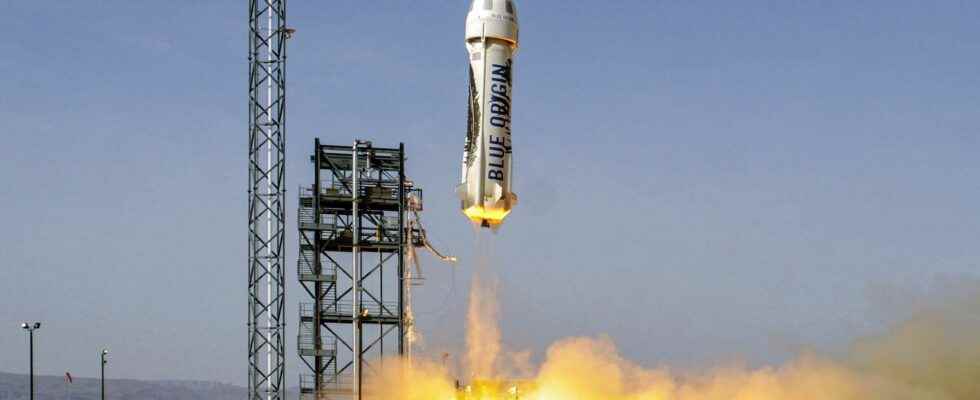This Monday, September 12, the suborbital flight of Blue Origin’s New Shepard capsule failed. One minute after takeoff, the booster suffered a malfunction which caused the capsule to be ejected immediately. Luckily, there were no space tourists on board this flight, only experiments.
You will also be interested
[EN VIDÉO] The New Shepard’s first manned flight In the space race, Jeff Bezos, accompanied by his brother, Wally Funk, an 82-year-old American aviator, and an 18-year-old Dutchman, took off on Tuesday July 20 aboard the New Shepard which crossed the 100 kilometers of altitude. A success for Blue Origin’s first tourist flight.
The flight New Shepard NS-23 had already been postponed three times due to a weather report unfavorable. This Monday, the capsule on its booster was to take off at 3:30 p.m. Paris time but, on several occasions, the countdown had been suspended, without Blue Origin specifying why. The capsule finally takes off at 4:26 p.m., from site number 1 of the Blue Origin’s Corn Ranch in Texas.
The flight profile was that of a suborbital flight: vertical takeoff and climb to an altitude of 100 km, the international limit of space, then descent below parachute while the booster detached earlier in the ascent had to land for reuse — the capsule is also reused. Their last flight was in August 2021, with lunar experiences on board.
Motor problem and capsule ejection
Some 1 min 02 s after takeoff, the engine propulsion seemed to have a problem and ejected a large flame. Two seconds later, the main engine BE-3 spits, this time, another abnormal flame. Only a second later, thecomputer on board the New Shepard decides to eject the capsule for safety by lighting a solid propellant engine, very effective in freeing the capsule from the failing booster on the verge of the explosion.
Blue Origin confirmed the reusable New Shepard booster – this one on its 9th launch to date – failed during today’s uncrewed NS-23 cargo mission.
Here’s a slowed down version of the company’s video, showing the anomaly and the capsule’s abort system firing: pic.twitter.com/dwV5v4ljWF
—Michael Sheetz (@thesheetztweetz) September 12, 2022
It is flawless in terms of the capsule ejection test in the event of an explosion, which can reassure passengers on other flights to come. During an ejection, they will be shaken for a few seconds, but unharmed. Indeed, seven and a half minutes after takeoff, the capsule lands serenely under parachute.
Blue Origin’s live from flight NS-23. The New Shepard takes off at 01:20:50
Fortunately, there were no passengers on board. The flight carried 36 experiments, including some from NASA. It is clear that they will not have benefited from the desired conditions.
The next flight may arrive later than scheduled in Blue Origin’s schedule. The company of Jeff Bezos will now shed light on this failure of the booster before boarding passengers again for its tourist flights, and perhaps even make an unmanned flight before. Note, however, that the faulty booster was not qualified for manned flight, unlike the others used by Blue Origin for its passenger flights. Blue Origin had had no problems in the last 20 flights.
We’re responding to an issue this morning at our Launch Site One location in West Texas. This was a payload mission with no astronauts on board. The capsule escape system functioned as designed. More information to come as it is available.
— Blue Origin (@blueorigin) September 12, 2022
Interested in what you just read?
